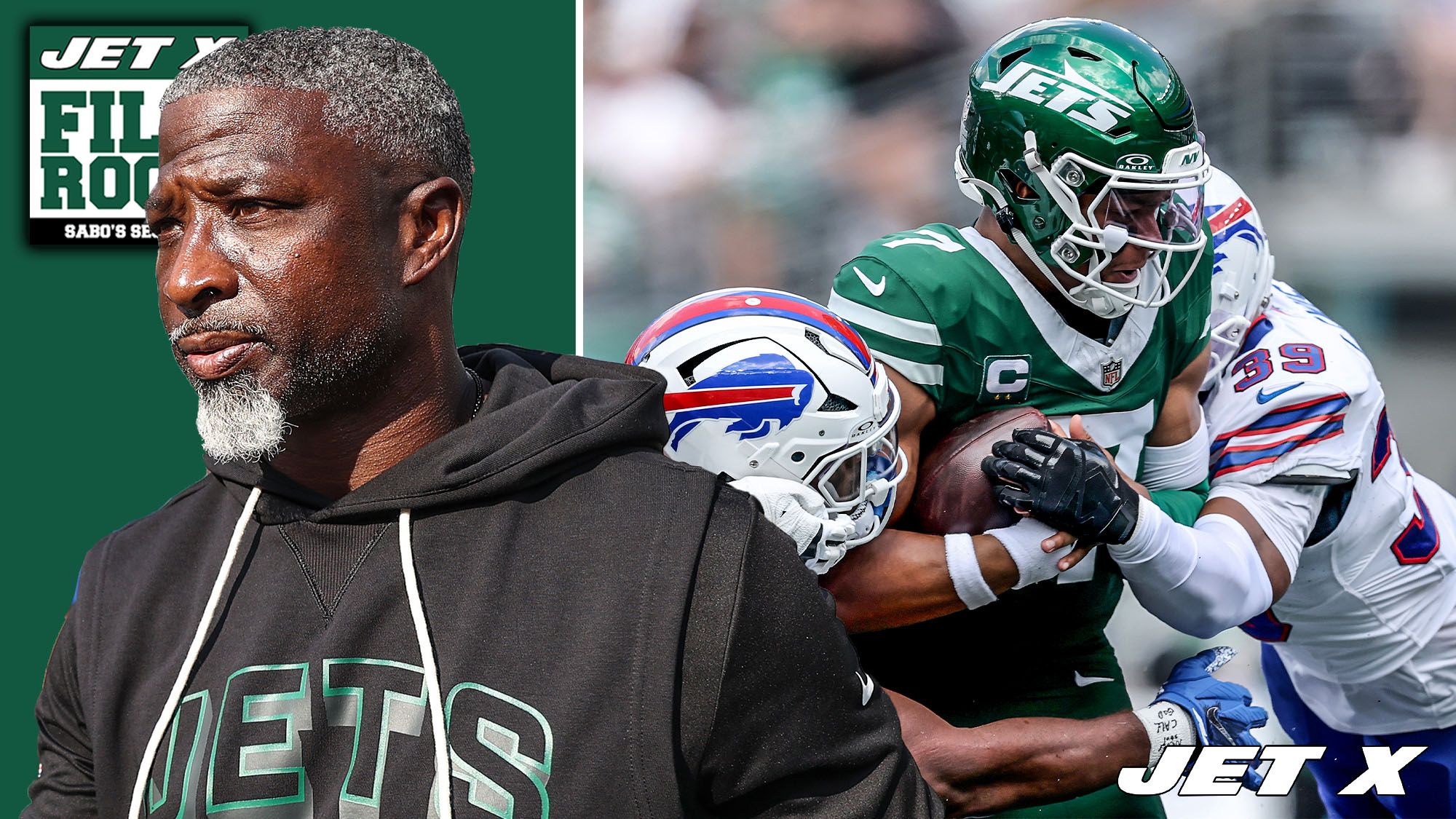Make no mistake about it: The New York Jets’ 2025 offense with Justin Fields is appropriately classified as a “Cheat Code“—in the same way Lamar Jackson’s Baltimore Ravens unit and Jalen Hurts’s Philadelphia Eagles work from a nuts-and-bolts perspective.
That doesn’t mean cheating always wins. In fact, those who use cheat codes often become so preoccupied with their own baggage that worrying about external factors passes them by.
In this National Football League, where the biggest stick has beaten down physicality, and the speed element makes the chessboard pieces much more predictable, strategizing specifically for those external factors is necessary. For Aaron Glenn’s New York Jets in Week 2, one must wonder if they game-planned for the Buffalo Bills at all.
While the Jets’ defense remains a significant issue, that’s another terrible story for a different day. This page on the internet deals with the Jets’ offense and how the Bills’ coaching staff was 100 steps ahead of the Jets’ staff in every way.
The opening drive
Not even a cheat code allows an offense to run the ball effectively if the defense guesses perfectly. I don’t care who’s playing quarterback; if linebackers and defensive backs are shooting through the line of scrimmage before the handoff or potential mesh point even occurs, forget about it.
Quite literally, nothing can be done.
The Jets’ opening drive featured Buffalo’s defense outright guessing the play on a perfect 3-for-3. After Breece Hall opened the game with a two-yard zone rush to the left—one that featured the Bills severely on their toes, meeting the offensive line at the line of scrimmage—the Jets called a duo out of the pistol look.
Buffalo’s absurd run aggression on the play provides a great example of how they put their players in the best position. Not only did Buffalo guess the run correctly, but they also executed a heavy run blitz.
The Bills start 2-high, which is usually a great run look for the offense. However, one of the high safeties drives down to serve as one of the box’s run fits.
The loss of three yards led to a much tougher third-and-11, which allowed the Bills to guess correctly again, playing coverage on a clear passing down. (Justin Fields missed Garrett Wilson on an in-breaker that could have bailed the offense out, but he overshot him badly.)
Knowing when to play coverage
While the Jets’ second drive was short (just one play), it’s incredibly telling.
Tanner Engstrand goes with 12 personnel and motions Mason Taylor from a left-side stack look (with a wide receiver) into a balanced off-tight end look out of an under-center singleback. As soon as Taylor sets, two Bills’ defenders transparently point to him.
The result of the play was perfect coverage.
Engstrand dialed up a play-action boot to get his athletic quarterback on the edge. The Bills still concerned themselves with a rush idea, flowing to the near-side while respecting the offensive line’s zone action, but they were still schooled enough to know that this wasn’t a run-blitz check.
Whatever the look may have been for the Bills to check out of a run blitz or not call one, it worked. They remained faithful to their pass-coverage responsibilities.
Fields had nowhere to go with the ball, and he fumbled while trying to make something out of nothing.
The at-the-line-of-scrimmage game in today’s NFL is an imperative notion, and this play is a tremendous example of how well the Bills are schooled as a team.
Blitzing DBs
If defensive backs continuously pick up tackles for losses (in the backfield), something’s wrong. It most likely means that both execution and strategy are tilted towards the defense, but the way it went down in Week 2 was beyond comprehension.
Finally, Engstrand gets something going on the Jets’ third offensive series. He inserts Max Mitchell as a sixth offensive lineman (as the second tight end) and goes with 22 personnel (six offensive linemen, one tight end, one receiver, and two running backs).
Hall rips off a 12-yard rush on the first play, and Fields connects with Wilson on an 18-yarder in the middle of the field. It’s almost as if Buffalo was unsure about themselves on this drive.
Why? Well, this is a look the Jets have not yet used this season. Sometimes, it’s just that simple when facing a well-schooled defense that checks into every perfect defense.
Unfortunately, the party didn’t last long, as an Arian Smith end-around working off a counter-pivot was dumped in the backfield for a 10-yard loss. A blitzing cornerback jumped it perfectly, which continued Buffalo’s torrid defensive guessing game percentage.
As if that weren’t enough, the Bills returned for the next series with another cornerback blitz. This time, Allen Lazard didn’t react fast enough, and Hall was dumped in the backfield again.
It’s one thing not to execute correctly, and it’s another thing to lose a football game. But what we’re dealing with here, in the New York Jets’ 30-10 loss to the Buffalo Bills in Week 2, was a game in which the home team did not even participate.
The lopsided nature of strategic game-planning was as drastic as anything I’ve seen in quite some time—and this is just the offensive part of the equation.

